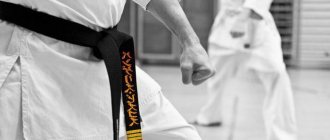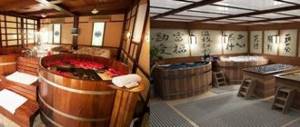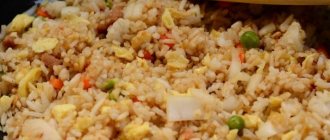16.07.2021 15:00
332
Rice in Japan is the basis of all dishes. Just as Russia views bread, the vast majority of Japanese cannot imagine a day without at least a small portion of rice. The main product is served with all dishes in a bowl called chavan. The container is made of such a size that it fits in your hand, then it is convenient to hold it to eat rice.
Japanese rice is cooked in water in a saucepan or pressure cooker without adding salt or other seasonings. The cereal is small in size, round, shiny and sticky, and contains a lot of starch. This makes it easy to grab the food with chopsticks. It is also used to make sushi, which is why it is often called "sushi rice" outside of Japan.
Common types of rice
White Rice (Hakumai)
Japanese rice has a short grain and becomes sticky when cooked. Most Japanese rice is polished to remove the hard outer husk (rice bran) and consumed as hakumai ("white rice"). White rice is a staple of Japanese cuisine and is served with most dishes.
Brown Rice (Genmai)
Unpolished rice (genmai) is sold less frequently as it is believed to not be as tasty as white rice. However, it has recently been gaining popularity as a health food because it is more nutritious than white rice. The outer bran retains most of the vitamins and minerals, which are removed by polishing.
Multigrain rice
Other grains and seeds can be added to white rice to add flavor and nutrients. One variation simply adds barley, but more complex varieties can include more than a dozen different additions. Multigrain rice is usually named by the number of different grains added (such as juhachikoku) and is served in some health food restaurants and ryokans.
Sticky Rice (Mochigome)
Sticky rice (also known as mochi rice or sticky rice) is the second most common variety of Japanese rice. When cooked, it is even stickier than regular Japanese rice and is commonly ground into rice cakes, made into candy, or used in rice dishes such as sekihan (red bean sticky rice).
Beneficial features
Japanese rice is an excellent source of minerals necessary for the proper functioning of the body.
- Potassium regulates blood pressure.
- Magnesium is important for the nervous system. It has a positive effect on concentration and also has a calming effect.
- Iron is necessary in the process of blood formation.
- Zinc helps strengthen the immune system.
- B vitamins improve the functioning of the nervous system.
- E is the vitamin of youth, protects the body from the destructive effects of free radicals.
- Fiber has a positive effect on digestive processes. Harmful substances are eliminated faster and have less contact with the colon epithelium, so this component can also minimize the risk of cancer.
- Boiled white rice can be consumed by people suffering from gastritis. It is able to neutralize excess stomach acid.
Regular rice products
Rice wine (Nihonshu or Sake)
Rice wine, commonly known as nihonshu or sake (sake is also used as a general term for alcohol), is an alcoholic beverage made by fermenting rice. Sake comes in several varieties and can be served hot or cold. Traditionally, it is not drunk with rice dishes, as it is considered rice. Mirin is a sweet rice wine that is widely used in cooking.
Rice Vinegar
Vinegar can also be obtained from rice and is used in dressings, cucumber pickles, marinades and for cooking sushi rice. Most Japanese rice vinegars are light in color and flavor and only slightly sour. Dark vinegars are also produced and consumed as a medicinal drink.
Rice flour
Rice flour, made from ground white or glutinous rice, is used to make various Japanese sweets and rice crackers (senbei), as a thickener in cooking, or as a substitute for wheat flour in making bread. Rice flour does not contain gluten.
Rice bran (Nuka)
Rice bran, or nuka, is the hard outer husk of rice grains that is removed when brown rice is polished to produce white rice. Rice bran has a high nutritional value and is used in Japanese cooking in a variety of ways, most commonly to make brine (nukazuke).
Rules for using Japanese chopsticks
Holding a hashi is not that difficult. The lower stick should be placed between the thumb and index finger of the right hand at a distance of 1/3 from the end of the stick. The opposite end of the stick lies on the ring finger. The second stick is parallel to the lower one, it is located at a distance of approximately 1.5 cm. The lower stick remains motionless, and the upper one is freely controlled by the index and middle fingers, and is held with the thumb.
Khasi (sticks) are a purely personal item. There are several rules for their use:
- Do not eat with chopsticks from common dishes. Before starting your meal, place food on your plate.
- If you don't need hashi yet, use a holder for them. You can place the chopsticks on the table, on the side of the plate parallel to the edge of the table. Do not leave the cutlery in the rice in an upright position; do not place it across the bowl.
- Don't move your chopsticks over the dishes, wondering which one to choose. This is seen as greed for food.
- You can’t rummage through the dishes, trying to take the tastiest piece. You need to take food from above or from the side that is closer to you.
- It is not nice to lick the ends of chopsticks, play with hashi, or cross them at the table. It is indecent to point at something with a chopstick or stir soup with it.
- You cannot clasp a hashi in your fist - for the Japanese this is a threatening gesture.
- You should not use chopsticks to pass food to another person. This is reminiscent of a funeral ceremony where close relatives place the bones of a cremated person in an urn.
Common rice dishes
Cooked rice (gohan)
A bowl of rice is the basis of most Japanese dishes. It is often the centerpiece of a meal, such as a Japanese breakfast or set meal (teishoku), in which other dishes are traditionally seen as complements to the rice. A bowl of rice is usually served as a set with miso soup and pickles. Western restaurants serve boiled rice instead of bread.
Sekihan
Sekihan (Japanese: 赤飯) is a traditional Japanese dish of red mochi rice with beans. The red color of rice comes from adzuki beans, with which it is cooked.
Sekihan is prepared in Japan on special holidays, such holidays include: birthdays, weddings, “Shichi-go-san” (a traditional festival for children three, five and seven years old). In Japan, red rice is so closely associated with holidays that the phrase "let's eat sekihan!" approximately equal in meaning to the phrase “let's celebrate!”
In the geisha world, sekihan plays an important role in the ceremony of leaving the profession. For example, when they get married, they send boxes of sekihan to their guests.
Rice cakes (mochi)
Rice cakes (mochi or omochi) are traditionally made from steamed and pounded glutinous rice. They are traditionally eaten on New Year's Day, but have become a popular dish throughout the year. Rice cakes are prepared in a variety of ways and can be eaten fresh, grilled, fried, or served in soups, like dumplings.
Rice balls (Onigiri)
Rice balls, or onigiri, are made from cooked rice and are usually wrapped in nori seaweed. They are usually lightly seasoned with salt and often contain fillings such as umeboshi (pickled Japanese plum), Okaka (dried bonito and konbu shavings), or salmon. Rice balls are a popular and inexpensive snack available in convenience stores, but are also commonly found on the menus of other restaurants and izakayas.
Tamago Cake Gohan
Tamago cake gohan is a common breakfast dish consisting of a raw egg mixed in a bowl with rice. There are many variations of this simple and comforting food, but most often it is flavored with a small amount of soy sauce. Eggs are usually eaten raw or partially cooked.
Ochazuke
Chazuke, or ochazuke, is another simple comfort food consisting of hot water, tea, or light fish stock poured over rice. Chazuke is often garnished with toppings such as umeboshi, grilled salmon, or pickles. Chazuke is usually served at izakaya restaurants and is a popular dish. Ochazuke is often served last and symbolizes the end of the feast.
Kai, Kai
Kayu, or okayu, is a Japanese rice porridge made by slowly cooking rice in plenty of water. It tends to be thicker than other types of riceIt tends to be thicker than other types of rice porridge or porridge and is a suitable dish to use up leftover rice. Kaya is often garnished with ume-boshi and is usually served to sick people because it is easily digestible.
Donburi
Donburi refers to a bowl of plain boiled rice with some other food on top. Donburi is served in specialty restaurants, but it is also a common dish that can be found on the menus of all types of restaurants. Some of the more popular varieties are gyudon (beef stew), katsudon (tonkatsu), tempura, oyakodon (chicken and egg), tekkadon (tuna), and kaisendon (raw seafood).
Sushi
Sushi can be defined as a dish that contains sushi rice, made from white rice seasoned with vinegar. There are different types of sushi dishes, such as nigirizushi (handmade sushi), makizushi (rolled sushi) and chirashizushi (sushi rice with raw fish). Sushi is the most famous Japanese dish outside of Japan, and one of the most popular dishes among the Japanese themselves.
Fried rice (chahan)
Fried rice, or Chahan, is a dish that originally originated from China. There is an endless variety of ingredients that can be added to fried rice. Some of them are peas, egg, green onions (negi), carrots and pork. Chahan is a suitable dish to use up leftover rice.
Omuraisu
Omuraisu, shortened rice omelette, fried rice wrapped in a thin omelette. Omuraisu is usually shaped like an American football and can be topped with ketchup or demi-glace. This is a common diner or cafe meal, although there are also specialty omurice restaurants.
Rice crackers (senbei)
Senbei are baked or grilled crackers made from rice flour. They come in different shapes and sizes, and there are both savory and sweet varieties. Some of the most popular ones are seasoned with a soy sauce glaze or wrapped in seaweed.
Sweets
Rice flour and crushed glutinous rice (mochi) are among the most common ingredients in Japanese sweets, along with sweet beans. Some common sweets made from rice products include daifuku (sweetened red bean paste wrapped in mochi), kushi-dango (skewered mochi dumplings), and ohagi (red bean paste wrapped in coarsely ground mochi rice).
Rice bran pickles (Nukazuke)
Rice bran pickles are common homemade pickles fermented in a mixture of roasted rice bran (Nuka), salt and other ingredients. Whole vegetables are placed in puree and allowed to brew from one day to several months. The resulting crispy, salty and spicy cucumbers are then washed, cut into slices and served. Nukazuke are rich in lactobacilli and are said to aid digestion. Assorted pickles consisting of cucumbers, carrots, eggplant, daikon or turnips (kabu) are often served as part of a set menu (teishoku) or as part of a rice set (shokuji) in kaiseki ryori (Japanese haute cuisine) dishes.
Rice bread (Komepan)
Rice flour can be used to make different types of bread. Rice bread (comepan) is sold in many bakeries and supermarkets and is a gluten-free substitute for regular wheat flour bread.
Recipes for low-calorie Japanese desserts at home with photos
It's hard to believe that dessert can be low-calorie, healthy, and safe for your figure.
But it's possible! Japanese dishes surprise with their unusualness, and here are some dessert recipes that you can prepare at home:
Mochi
What is Mochi dessert? These are small balls of rice flour with filling inside.
100 grams of rice flour 80 grams of cane sugar 100 ml of purified spring water 3 drops of vinegar For the filling you can take fruits, cereals, nuts, jam
Step-by-step instruction:
First prepare the filling. For example, chop fruits along with nuts. Then add sugar to the rice flour, then water with 3 drops of vinegar. Watch the consistency of the dough; there should be no lumps. While pouring water, mix the mixture thoroughly. Once you have achieved a uniform consistency, cover the container with cling film and leave in a warm place for 30 minutes. After time, make a “sausage” from the resulting mass, divide into 10 equal parts. Roll out each piece with a rolling pin, put the filling in the middle, cover with the edges of the dough, and shape into a ball. Sprinkle with powdered sugar before serving. Bon appetit!
Yokan
Anko bean paste 50 g cane sugar 100 ml purified water Agar-agar
Step-by-step instruction:
You may be interested in:How to transfer money from a Yandex wallet to a Sberbank card
Pour 300 ml of water into a container, add agar-agar, keep on fire for 7-10 minutes, just do not bring to a boil. Once heated, add the anko paste and cook until the mixture begins to smoke. Pour the finished mixture into molds and leave to harden. Top with caramel or jam.
Sweet rolls
150 g dried apricots 50 g flakes 60 g seeds 10 ml lemon juice 1 banana
Step-by-step instruction:
Soak the dried apricots for 5 minutes in cool water. Dry the seeds in a frying pan for 2-3 minutes. Using a blender, make a homogeneous mass of dried apricots, seeds, oatmeal, then roll out using a rolling pin. Place a banana on the edge of the “pancake” and wrap it like a roll. Wrap in foil and refrigerate for 4 hours. Then cut and serve.
Japanese soups, appetizers, and desserts are quite simple to prepare, and as a result you get an unforgettable, refined taste of oriental cuisine.
If you want to make a Japanese dish at home, but are not confident in your abilities, watch this useful video with a step-by-step guide to preparing sushi:
Source
Rice fields and rice attractions
Rice fields are a common sight in rural Japan and an image of nostalgia for many people. The fields begin as flooded fields in early summer and transform into seas of green and gold waves as the rice grows and matures throughout the season. The rice crop is then usually harvested in the fall, although in some southern regions more than one crop may be grown per year.
Sankyo rice warehouses. Sakata city.
Some places known for particularly beautiful rice cake scenery include the Noto Peninsula in Ishikawa Prefecture, Shodoshima Island in Kagawa Prefecture, and the Echigo Tsumari area in Niigata Prefecture.
Surrounded by the fertile Shonai Plain, the city of Sakata in Yamagata Prefecture has been a center of rice trading for centuries. One of the city's tourist attractions is a series of historic rice warehouses, one of which has been opened to the public as a local rice museum.
Views: 2,605
Share link:
- Tweet
- Share posts on Tumblr
- Telegram
- More
- by email
- Seal
How to cook rice like in Korean TV series and Japanese anime?
It’s quite strange to hear this from a woman who decided to connect her life with a man of Eastern nationality. Everyone knows that the Japanese, Koreans and Chinese love rice: they do not have bread as such, the kind that you and I have become accustomed to since childhood. Of course, Koreans living in the CIS have assimilated, so the food on their tables appeared as “ours”, but the amount of rice in many families has not changed.
No Korean table is complete without a portion of pabi (pabi is Korean rice).
I think many of you have seen in Korean dramas what cooked pabi looks like in South Korea: crumbly, rice after rice, white, smooth rice, which they gobble up perfectly with the help of wooden chopsticks, while actively communicating with each other. Today I will tell you how to cook just such rice.
The recipe is quite simple:
1. It is necessary to take the required amount of dry rice and rinse it thoroughly under running water so that all the dust is removed from it. This is done so that during cooking this dust does not stick all the rice together.
2. You must use a cauldron, a small one is fine; an ordinary metal pan is not suitable, because, as my Korean mother-in-law taught me, the rice will change the taste.
3. Distribute the rice evenly over the bottom, and then place your open palm on top of the rice and begin to pour cold water to the level of the bones. This is how they used to determine the required amount of water when there were no measuring cups. You can never go wrong using this method!
4. Cover with a lid and place over high heat until it boils. After the rice boils, reduce the heat to the lowest setting and cook for 20 minutes, without opening the lid if possible.
5. And the last thing I would like to note: no salt! Neither in South Korea, nor in China, nor in Japan is rice salted.
This fact surprised me very much, but with the passage of time I can say with confidence that unsalted rice is actually much tastier than salted rice. I really hope you find this recipe useful! I will be grateful for questions and comments!
PS And finally, I want to share the peculiarity of serving cooked rice to the table. I don’t know whether this tradition has been preserved in North and South Korea, but “our” Korean women, before serving, put the contents of the cauldron on one dish and form a high mound of still hot rice.
Interestingly, there is even a belief in this regard: if a girl puts pabi on a dish beautifully and neatly, forming a perfect slide, then she will have a beautiful daughter. That's why in my family all the women try their best. Well, me too, just in case! :-))
You can read more about marriage with a Korean in my article:
Source
New etiquette
Now a new piece of food etiquette has appeared on the culinary landscape. Recent research by Michiko Honda, vice director of the Infinity Finishing Academy in Fukuoka, has caused a storm of emotions. She showed the correct way to eat onigiri rice balls and proved that half of the Japanese eat it incorrectly.
Rice balls as we know them today are usually purchased from supermarkets and convenience stores, but nothing beats the fresh taste of homemade onigiri. Creating a perfect triangle requires firm but gentle pressure from the palms of both hands, and it is often said that thinking lovingly about the person you are making the rice ball for is an act of love that will help it become even more delicious. Honda points out that the word for palm, tanagokoro, means “te no kokoro” (“heart in hands”), which connects it to deeper meanings of love.
Step by step recipe
Boil the rice in lightly salted water until almost done, drain in a colander, and rinse. The rice will arrive in a saucepan with vegetables.
Place the frozen beans in a saucepan over medium heat for 5 minutes. Add a little salt and a little water. This is necessary for the beans to defrost.
Cut onions and peppers into large pieces, carrots into strips. Lightly crush the garlic with a knife and chop finely.
Take a clean saucepan, heat the vegetable oil, put chopped onions, garlic, carrots, bell peppers, and beans there. Fry over high heat (medium-high), stir every 2-3 minutes, making sure nothing burns.
Mix sugar and soy sauce. Add to the vegetables in the saucepan. We continue stirring. When there are a couple of minutes left until done, add the rice and canned corn. Mix everything thoroughly again. I have an electric stove, so I often resort to this trick: I turn off the burner and leave the frying pan on it so that the dish simmers and cooks. If you have a gas stove, then after 1-2 minutes simply reduce the heat to the very minimum and let the dish cook for another 5 minutes. The total frying time is no more than 20 minutes.
Varieties
Comparison of Koshihikari and Calrose varieties.
Koshihikari on the left, Culrose on the right. Koshihikari (コシヒカリ) is a highly prized variety and one of the most commonly grown in Japan. Akitakomachi is also quite popular. The Sasanishiki variety is known for retaining the same flavor when refrigerated. Yamada Nishiki is the most famous variety grown specifically for sake.
In Hokkaido, Japan's northernmost prefecture, hardier varieties such as Oborozuki and Yumepirika have been developed to withstand colder climates.
Calrose is the name originally used for the medium grain Japonica variety developed in 1948 and is now used as a generic term for the California medium grain Japonica variety. Although it is not true Japanese rice, Calrose type rice has been grown by Japanese American growers in California for many years. It is commonly used in Japanese cuisine in North America and is quite good as sushi rice. It is also exported to a number of countries, including Japan, although it has not gained much popularity among Japanese consumers. In recent years, Koshihikari rice has also been grown in the United States and Australia.
Preparation:
Step-by-step recipe for Asian cuisine with photos Japanese-style rice with vegetables.
1) Cook rice. For this dish, you can cook it very easily - put a liter and a half of water in a pan, add salt and when it boils, add the washed rice. Cook for 15 minutes after boiling. That is, until almost done, then put it in a colander and let the excess water drain.
2) Prepare vegetables for our dish. What is frozen - defrost, what is fresh - cut into cubes.
3) In a small cauldron, wog, or simply in a saucepan with a thick bottom, heat the vegetable oil and fry the garlic, then add the rest of the vegetables. Stir all the time so that it does not burn. Cook over medium heat. After 10 minutes, add soy sauce and continue frying. When the sauce has boiled, taste the vegetables and, if necessary, add salt.
4) Now add rice to the vegetables and stir. Fry for 5-8 minutes, until the rice is saturated with vegetable juice and oil and becomes hot.
That's all, the Japanese-style Rice with Vegetables dish is ready.
Dinner
In the middle of the day, the Japanese try not to overeat. The mainstay of the lunch meal is usually rice. It is served with raw, marinated or boiled fish. Supplements include boiled vegetables, pickles and salads seasoned with rice vinegar or soy sauce.
Mayonnaise is not used in traditional Japanese cuisine. The lunch ends with tea.
The fashion for fast food has reached the East, so you can increasingly see young Japanese dining on hamburgers or chips, but the older generation remains faithful to traditions.










